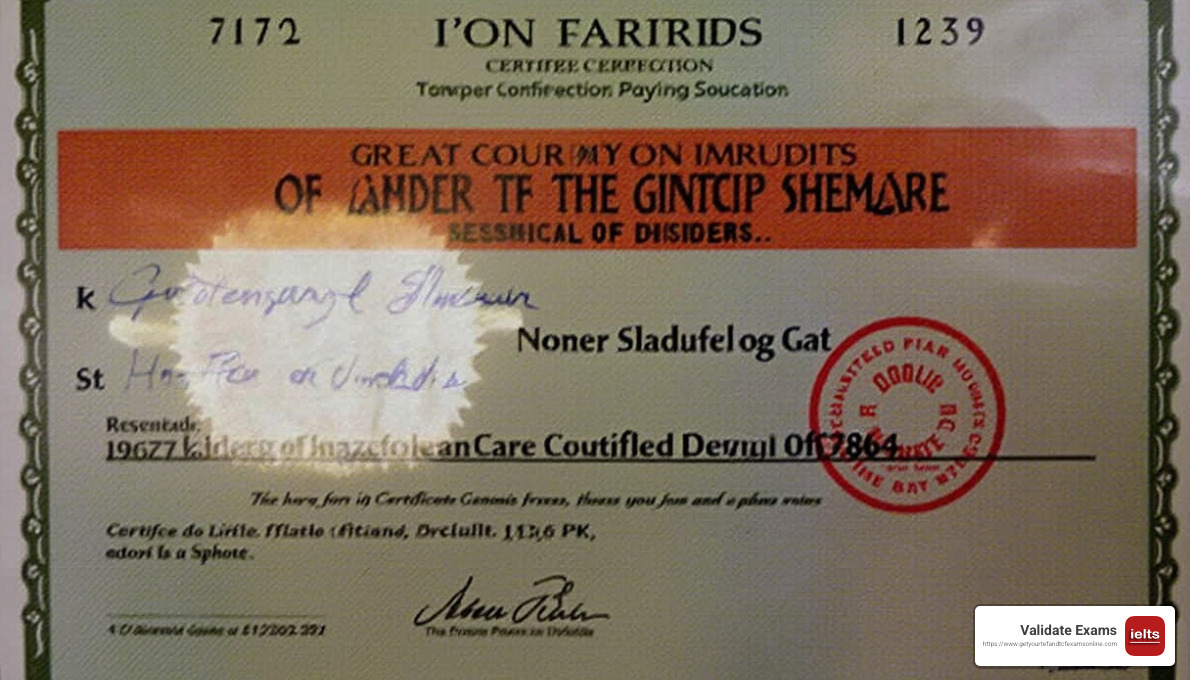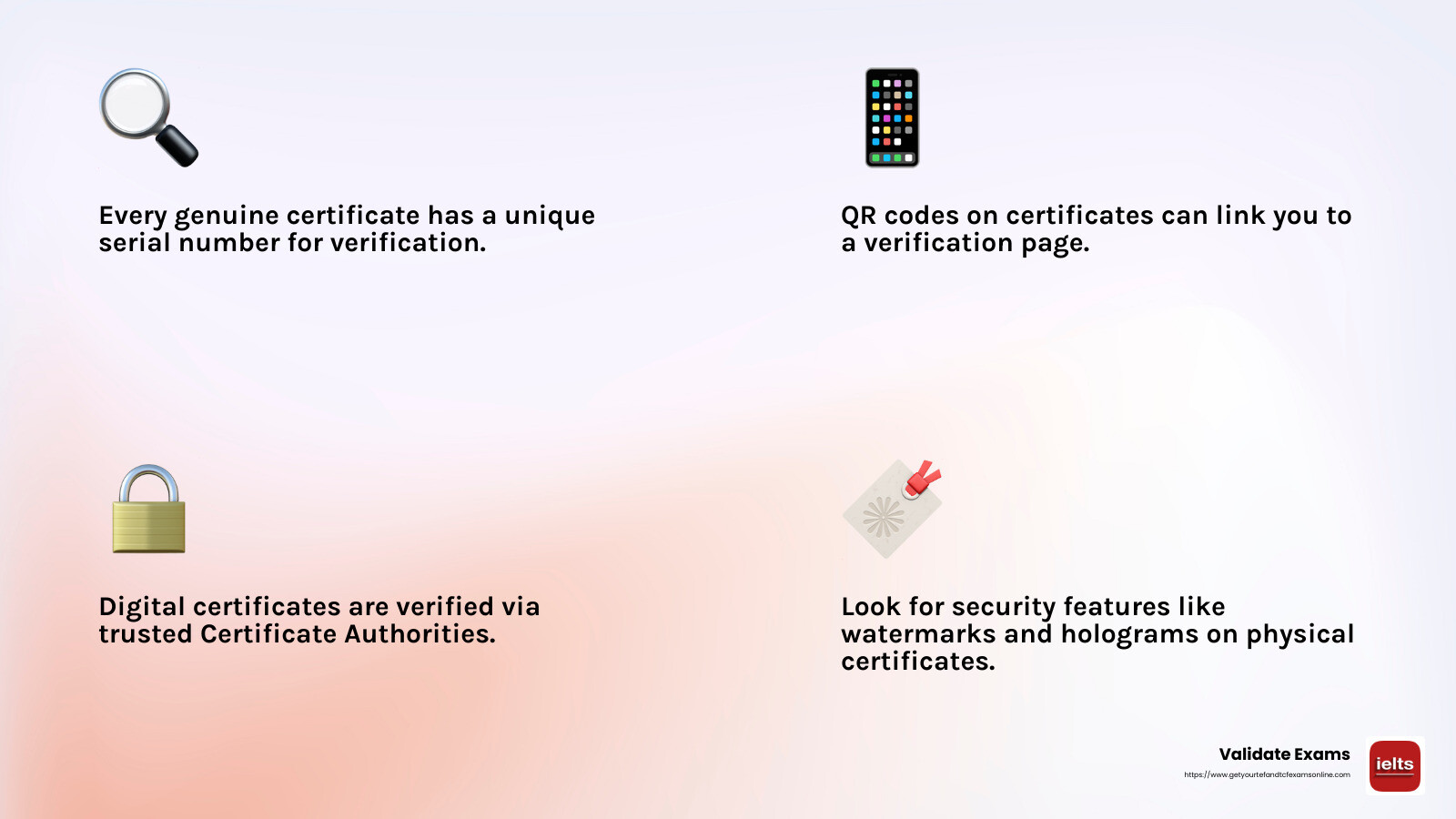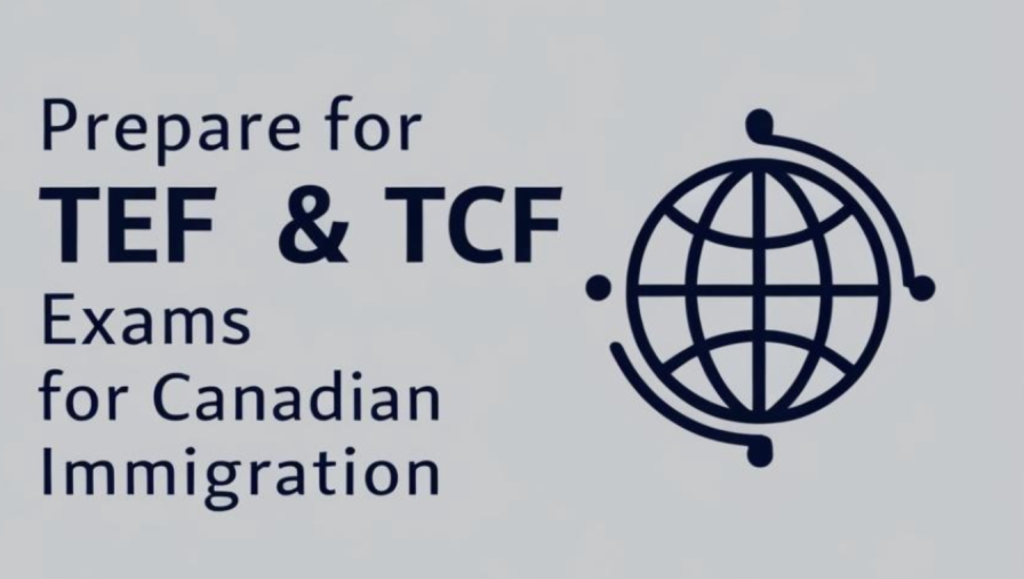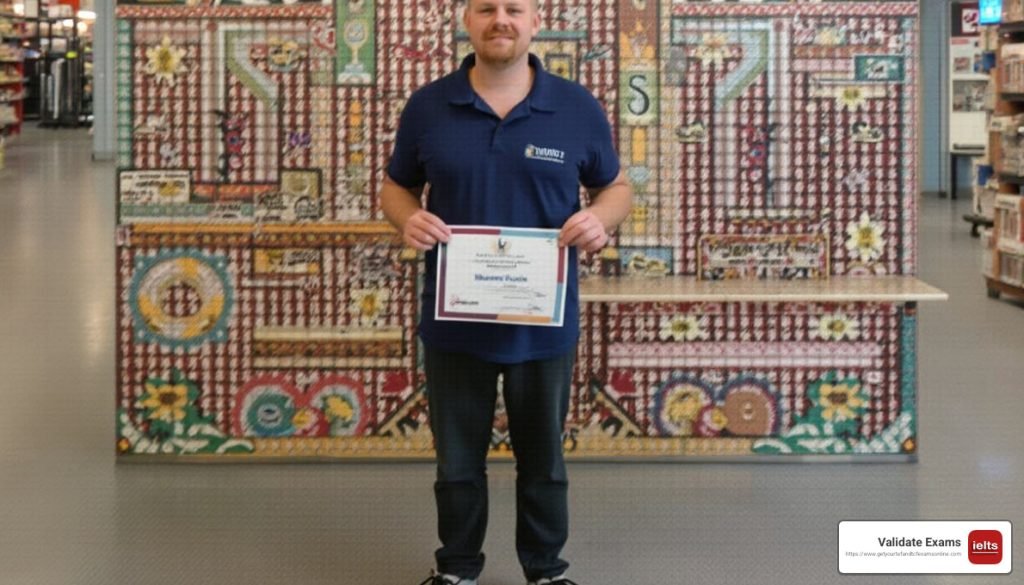Check Genuine Certificates: Top 5 Proven Solutions 2025
To check genuine certificates is crucial for anyone who wants to ensure that a document is authentic and not fraudulent. Here are straightforward steps to verify the authenticity of a certificate:
- Cross-Check with Issuing Organization: Contact the institution or organization directly via their official communication channels to confirm a certificate’s validity.
- Verify Key Components: Examine the certificate’s details, such as issuing organization, certificate holder’s name, issuance date, unique certificate number, and official stamps or signatures.
- Online Verification: Use the issuer’s official website and enter the certificate’s serial number or QR code for verification.
- Digital Signature Validation: If available, inspect the certificate’s digital signature using a PDF reader to ensure it’s issued by a trusted authority.
In today’s digital age, understanding how to verify certificate authenticity is vital to avoid falling victim to scams. Certificates that appear genuine might still be fake, leading to legal consequences or potential bans in certain countries.
Hello! I’m Baddo Magical. With experience in guiding people on how to check genuine certificates for exams like TCF, TEF, IELT, DELF, and more, my goal is to simplify these steps for you. Understanding this process ensures you receive authentic qualifications quickly and legitimately.
Check genuine certificates terms to know:
Understanding Certificate Verification
When verifying certificates, it’s crucial to understand the role of a Certificate Authority (CA). CAs are trusted entities that issue digital certificates to confirm the authenticity of a website or organization. They act like a digital notary, ensuring that the entity you’re dealing with is legitimate. This process helps establish trust online by binding an entity to cryptographic keys, enabling secure communications.
If a certificate is no longer valid, the Certificate Revocation List (CRL) becomes important. A CRL is a list maintained by the CA that includes all the certificates that have been revoked before their expiration date. If a certificate appears on this list, it means it should no longer be trusted. Browsers and other systems use CRLs to check the status of certificates, ensuring users aren’t tricked by invalid certificates.
Attestation is another key term in certificate verification. It involves verifying that a certificate is genuine and that the information it contains is accurate. This can involve checking against a database of issued certificates or confirming with the issuing organization. Attestation is a critical step in ensuring that a certificate hasn’t been tampered with or fraudulently issued.

In summary, understanding these key components—Certificate Authority, Certificate Revocation List, and Attestation—is essential for anyone looking to check genuine certificates. They provide the framework for ensuring that certificates are trustworthy and reliable, safeguarding both individuals and organizations from fraud.
How to Check Genuine Certificates
To check genuine certificates, you need a systematic approach. Here are some key methods to help you verify whether a certificate is real or fake.
1. Use the Serial Number
Every legitimate certificate has a unique serial number. This number is your first step in verifying authenticity. You can cross-check this number with the issuing organization to confirm if the certificate is genuine. Contact the organization directly using official contact details, which you can usually find on their website. This prevents falling prey to fake credentials.
2. Scan the QR Code
Many modern certificates come with a QR code. Scanning this code with your smartphone can direct you to a verification page on the issuer’s website. This page will confirm the details of the certificate and its authenticity. Be cautious, though—always ensure that the website URL is legitimate and secure (look for HTTPS in the URL).
3. Verify Digital Certificates
Digital certificates are becoming increasingly common. They are electronic credentials used to prove the authenticity of a digital document or transaction. To verify a digital certificate, check for a digital signature from a trusted Certificate Authority (CA). You can also use online tools to verify the signature and ensure it matches the information on the certificate.
Quick Tips for Verification
- Look for security features like watermarks, holograms, or embossed seals on physical certificates.
- Compare with known authentic certificates to spot inconsistencies in design or information.
- Use official verification portals provided by educational institutions or professional organizations for direct validation.
By following these steps, you can effectively check genuine certificates and protect yourself from fraud. Always use multiple methods to confirm authenticity, especially for important documents.

Tools and Techniques for Certificate Verification
When you need to check genuine certificates, using the right tools and techniques is crucial. Here are some effective methods to ensure certificate authenticity:
SSL Certificate Check
An SSL certificate check is essential for verifying the security of a website. SSL certificates authenticate and secure websites, facilitating encrypted connections. To perform a check, use tools that analyze the SSL installation on a server. For example, entering a server address in an SSL diagnostics tool can reveal issues with the certificate installation. Look for a padlock icon in the browser, which indicates a secure connection. If the browser shows warnings like “your connection is not private,” the SSL certificate might be invalid or improperly installed.
Certificate Management Tools
Using certificate management tools can simplify the management and verification of SSL and code signing certificates. These tools allow you to generate Certificate Signing Requests (CSRs), install certificates, and verify their details. They are especially useful for IT administrators managing multiple certificates within an organization.
Holographic Stickers
Holographic stickers add a layer of security to physical certificates. These custom serialized stickers are tamper-evident and feature exclusive serial numbers. They provide a visual cue of authenticity, making it harder for forgers to replicate. When verifying a certificate with a holographic sticker, check that the sticker is intact and that the serial number matches the issuer’s records. This simple yet effective tool increases confidence in the certificate’s genuineness.
Utilizing these tools and techniques helps ensure that you can effectively check genuine certificates. Whether dealing with digital or physical documents, these methods provide reliable ways to confirm authenticity and protect against fraud.
Common Issues and Solutions in Certificate Verification
When verifying certificates, you might encounter some common problems. Let’s explore these issues and how to solve them.
Certificate Name Mismatch
A certificate name mismatch occurs when the name on the SSL certificate does not match the domain name of the website. This can cause browsers to display a warning message, making users question the site’s authenticity.
Solution: Ensure that the certificate’s Common Name (CN) matches the exact domain name. If your website supports multiple subdomains, consider using a wildcard certificate. Always check the certificate details to confirm the CN matches the domain.
Certificate Not Trusted
This issue arises when a browser does not recognize the authority that issued the certificate. Browsers have a list of trusted authorities, and if the issuer is not on that list, the browser will display a warning.
Solution: Verify that your certificate is issued by a well-known and trusted authority. If not, request a certificate from a recognized authority. You can also install the intermediate certificate chain provided by the authority to establish trust.
Intermediate Certificate Issues
Intermediate certificates act as a bridge between your SSL certificate and a trusted root certificate. If these are missing or incorrectly installed, browsers may not trust your certificate.
Solution: Ensure that all necessary intermediate certificates are installed on your server. This can be done by downloading the complete certificate chain from your authority and installing it on your server. Use an SSL diagnostics tool to verify the chain and check for any missing links.
By understanding and addressing these common issues, you can ensure a smoother certificate verification process. This helps maintain trust and security for your website or organization.
Frequently Asked Questions about Certificate Verification
How to verify a certificate is valid?
Verifying a certificate’s validity is crucial to ensure it is genuine and trustworthy. Here are a few simple steps to check genuine certificates:
- Inspect Physical Features: Look for official logos, signatures, and security features like watermarks or holograms. Fake certificates often have inconsistencies or spelling errors.
- Contact the Issuer: Reach out to the organization that issued the certificate. Use official contact details from their website to avoid fraud.
- Use Online Verification Tools: Many issuers provide online portals where you can enter the certificate’s serial number or scan a QR code to verify its authenticity.
- Check the Certificate’s Details: Ensure the name, date, and other details match with known records or the holder’s information.
By following these steps, you can confidently determine if a certificate is valid.
What is a Certificate of Authenticity?
A Certificate of Authenticity (COA) is a document that verifies the genuineness of an item, such as art, memorabilia, or even digital content. It often includes:
- Description of the Item: Details about what the certificate covers.
- Unique Serial Number: A specific identifier for tracking authenticity.
- Authorized Signatures: Signatures from credible sources or experts who validate the item.
Having a COA can increase an item’s value and provide peace of mind to buyers and sellers.
How do I check certificate validity online?
Checking certificate validity online is quick and straightforward. Here’s how you can do it:
- Visit the Issuer’s Website: Go to the official site of the certificate issuer. They often have a dedicated verification section.
- Enter the Certificate Details: Input the certificate’s serial number, QR code, or other unique identifiers.
- Review the Verification Results: The system will confirm if the certificate is valid, expired, or revoked.
- Ensure Secure Connection: Always ensure the website uses HTTPS to protect your data during the process.
Online verification is an efficient method to confirm certificate authenticity without needing physical access.
By understanding these FAQs, you can steer certificate verification with ease and ensure the integrity of your documents. Let’s now explore more about the tools and techniques for certificate verification.
Conclusion
Verifying the authenticity of certificates is more important than ever. At Validate Exams, we understand the need for genuine certificates and a stress-free verification process. Our approach ensures that you get the language proficiency certificates you need—like IELTS, TOEFL, TEF, and others—without the hassle of traditional exams.
Our certificates are not only genuine but also easily verifiable. We provide a seamless process that saves you time and stress, allowing you to focus on your goals, whether they’re academic, professional, or personal.
By choosing us, you can bypass the lengthy and often stressful exam preparation. Our certificates are 100% genuine, registered in official databases, and come with center stamps for added authenticity. This ensures acceptance by universities, employers, and immigration authorities worldwide.
With the rise of online platforms, the risk of encountering fake certificates has increased. But with Validate Exams, you can rest assured that your certificate is valid and recognized. Our process is designed to be fast and reliable, providing you peace of mind.
In conclusion, whether you’re a job applicant, student, immigrant, or professional, Validate Exams offers a practical solution for obtaining genuine certificates. Our service is custom to meet your needs, ensuring you can move forward with confidence.
Thank you for choosing Validate Exams, where genuine certificates and stress-free verification are our top priorities.

